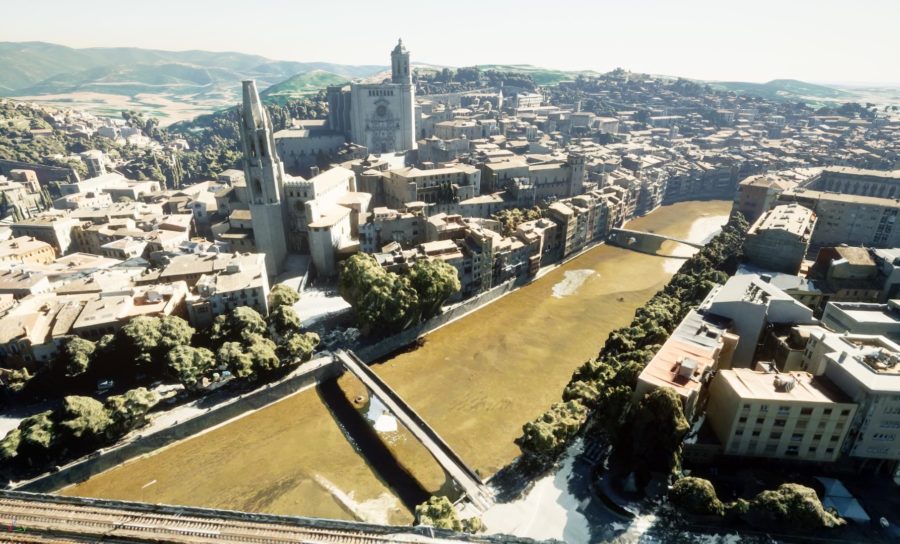In Augmented Reality and Virtual Reality News
August 1, 2022 – Esri, a provider of geographic information system (GIS) software, location intelligence, and mapping solutions, has recently announced the launch of its ArcGIS Maps SDK for Unity and ArcGIS Maps SDK for Unreal Engine. Both SDKs bring direct ArcGIS integration to developers working with these game engines.
According to Esri, over the last few years, the technologies originally developed for building gaming experiences have evolved into robust, real-time 3D development tools that embrace a broad range of industries. Developers are using these tools to build whole new classes of applications. Sometimes referred to as serious games, or immersive experiences, these sophisticated, realistic, intuitive, and engaging visual approaches to working with real-world data are taking off, exposing value in existing datasets that might previously have been hard to tap into.
The company stated that in response to feedback from its customers and to ease working with real-world data in game engines, Esri began work on two ArcGIS Maps SDKs in 2019 with the goal to deliver a premium set of developer tools that can bring data from ArcGIS directly into game engine development environments.
Now at version 1.0, both SDKs will empower developers to leverage precise real-world data and rich geospatial analysis, at a global or local scale, in their applications and projects. Developers will benefit from the accuracy and authenticity that real-world geospatial data provides, whether it’s their own existing organizational data or live services from repositories like the ArcGIS Living Atlas of the World.

With the new SDKs, developers can build world-scale augmented reality (AR), tabletop AR, and virtual reality (VR) experiences for industries such as Architecture, Engineering, and Construction (AEC), defense, public safety, natural resources, and urban planning.
Specific use cases across these industries could include:
- AEC organizations – can use game engines to represent construction sites in real-time for decision makers to review without having to be on-site themselves;
- Defense – for the simulation of troop movements, various scenarios, and mission-planning;
- Public safety organizations – can model crowd control at major events and explore how positioning staff in different configurations could change crowd flow to-and-from an event;
- Natural resource companies – can use game engines to better manage existing infrastructure and socialize/communicate innovations in energy generation, such as visualizing a proposed solar or wind farm and its impact on the landscape;
- Urban planners – can conduct collaborative planning and explore how proposed developments will look-and-feel in the real-world context of their communities.
Esri added that both CIMIC Group and Houseal Lavigne have recently shared how their organizations are using the respective SDKs to build immersive representations of projects they are supporting.
The ArcGIS Maps SDK for Unity and the ArcGIS Maps SDK for Unreal Engine deliver a foundation for consuming ArcGIS content and integrating with the ArcGIS system. Both SDKs are available now as free downloads to users with a free ArcGIS Developer account or an ArcGIS Online account.
For more information about the ArcGIS Maps SDK for Unity and the ArcGIS Maps SDK for Unreal Engine, and their applications for creating AR and VR experiences, an in-depth and detailed explanation on the solutions can be found on the ArcGIS Blog.
Image / video credit: Esri / ArcGIS / YouTube
About the author
Sam is the Founder and Managing Editor of Auganix. With a background in research and report writing, he has been covering XR industry news for the past seven years.
